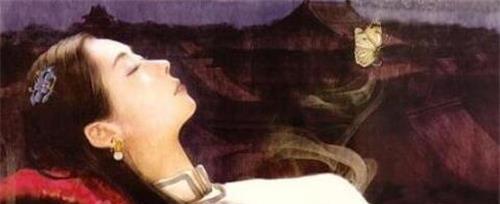China has a long history and culture of 5,000 years, produced 422 emperors, as one of the four ancient civilizations in ancient times, China has accumulated a lot of valuable wealth and cultural heritage over thousands of years. In order to commemorate the country they laid, many emperors brought the rare treasures they had collected into another world, which also left a lot of valuable wealth for China's archaeological research.

Among them, in 1972, a female corpse unearthed in Mawangdui, Changsha, Hunan Province, shocked archaeologists around the world. It turned out that this female corpse after more than two thousand years, but the face is still alive, the skin is even elastic, many foreign experts know this female corpse, have offered to participate in the excavation of this female corpse, especially Japanese experts, the performance is the most intense, but in the end have been rejected by our country.
And this female corpse is the Western Han Changsha State Li Cang's wife Mrs. Xin Chai, according to records, in 202 BC, Liu Bang established the Western Han Dynasty, its territory is vast, in order to stabilize the world, Liu Bang rewarded 7 princes of the opposite sex, with the development of time, the power of these 7 princes has become bigger and bigger, in order to stabilize the rule, Liu Bang found an excuse to kill 6 of the princes of the opposite sex, only one of them was not killed, why is this?
It turned out that this prince who was not killed was Wu Rui of the State of Changsha, in the geographical location of the State of Changsha, Liu Bang has not moved, because around the State of Changsha, there is also a south Vietnamese state with strong military strength, in order to maintain this strategic position, Liu Bang can only choose to win over Wu Rui and prevent Wu Rui from defecting, so he found his own cronies Li Cang to come to Changsha to monitor Wu Rui, and the tomb of Lady Xin Chai was built by Li Cang's son Li Fu.
At the excavation site of Mrs. Xin chai, experts found that there was charcoal weighing up to 5,000 kilograms in the burial chamber to prevent moisture from the tomb, and a white paste mud of up to 1.3 meters thick was accumulated outside the charcoal, which could prevent the infiltration of rainwater, so although Mrs. Xin Chai's tomb was well preserved for more than 2,000 years, the coffin buried deep in the ground formed a constant temperature, hypoxia and sterile environment.
After the test of Mrs. Xin Chai, she died about 50 years old, about 1.54 meters high, weighing about 34.3 kg, at that time, such a weight was already a standard height, during the Northern Song Dynasty, the average height of Japan was only 1.42 meters, the archaeological team found that Mrs. Xin Chai's tomb had a colorless liquid of about 20 centimeters after opening the coffin, was it possible that there was already an antiseptic potion before 2000?
After the expert's test, in fact, it is not an antiseptic potion, but the water in the coffin passes through, and the white paste mud and charcoal layer slowly penetrate into the burial chamber, which is gathered over the years, but the expert still finds a little antiseptic substance inside, which has a weak bacteriostatic effect. This ancient corpse is well preserved, mainly the result of the tight sealing of the burial chamber and the deep burial.
After testing, 138 melon seeds were found in Mrs. Xinchai's body, and after testing, Mrs. Xinchai also suffered from coronary heart disease, and schistosomiasis eggs were also found in the body, but this disease is not called schistosomiasis eggs in medicine, because it was first discovered by a Japanese scholar in 1904, so it is called Japanese schistosomiasis.
But the schistosomiasis eggs found on Mrs. Xin Chai also confirmed the assertion of schistosomiasis in China's early medical works "Neijing" and "Qianjin Medicine", which advanced the time by 2000 years, and this female corpse was also called the most beautiful "Oriental Sleeping Beauty" by foreign scholars, two of which Japanese scholars have always proposed to take a strand of hair back for research, but we believe that this is the precious legacy left to us by the ancestors, so we politely refused.
However, the two Japanese scholars still did not give up and offered to donate money to our country, asking our country to bring back a hair, but this abnormal behavior also aroused our vigilance, and finally politely refused. However, some netizens said that the main reason why the Japanese have always wanted to take away Mrs. Xin Chai's hair is that they still want to grasp the genetic code of Chinese to obtain the genetic laws of Chinese, which is a kind of malicious temptation.